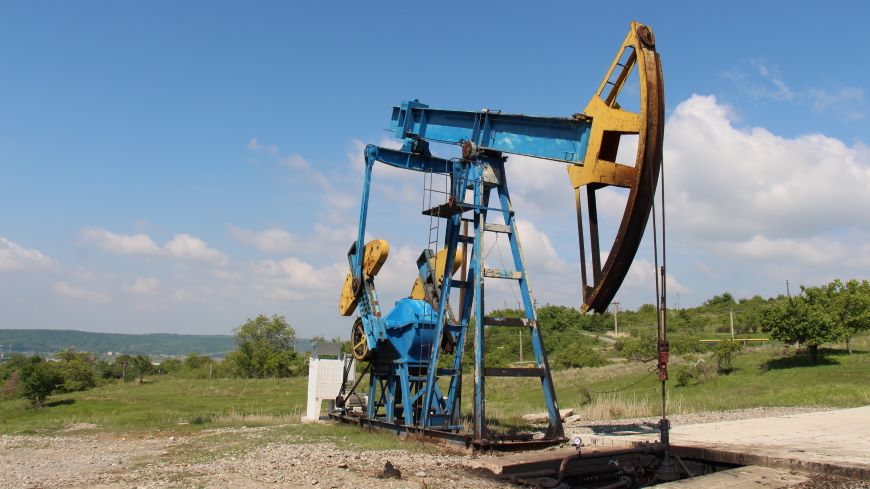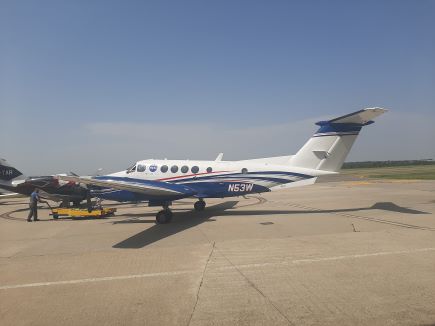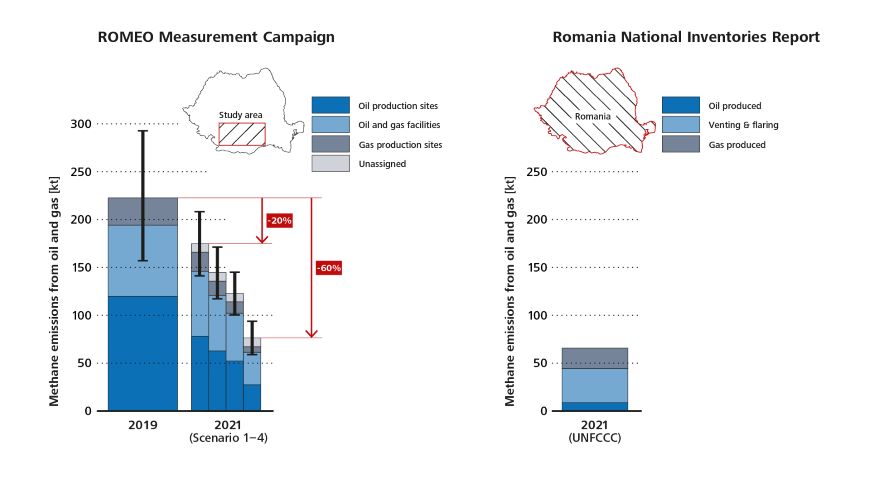Decline in methane emissions in southern Romania
Curbing methane emissions thanks to targeted measurements
Romania is one of the EU's largest methane emitters from oil and gas production facilities, but emissions have fallen sharply thanks to targeted information on leaks. An international research team led by Empa has shown that measurements not only reveal actual emissions, but also prompt companies to take action.

Methane damages the climate – in the first 20 years after it is released, it is around 80 times more harmful than CO₂. At the same time, the short-lived greenhouse gas offers enormous potential for climate mitigation, particularly in the oil and gas industry. This is because leaks can often be eliminated quickly, cost-effectively and permanently with “no-regret” measures. What would otherwise escape unnoticed can instead be captured, burned or reused. A study by Empa based on two international measurement campaigns in southern Romania shows that measurements are effective: After the first campaign in 2019, the companies responded to the identified leaks – and repaired their infrastructure. “When we measured again in 2021, many of the leaks had disappeared,” says the study's lead author Gerrit Kuhlmann from Empa. Depending on the scenario, methane emissions in the region have fallen by up to 60 %.
Super emitters are key to reduction

In the EU, around a third of energy-related methane emissions are attributable to oil and gas production. A significant proportion of emissions are produced in Romania – although the official figures are based on calculations, not direct measurements. To close this gap, the ROMEO campaign (ROmanian Methane Emissions from Oil and gas) was launched in 2019: Using mobile measuring devices, drones and aircraft, international research teams collected independent data for the south of Romania for the first time. A study carried out by Utrecht University showed that the measured methane emissions from southern oil production were not only significantly higher than previously assumed. They were even two to three times higher than the officially reported values for the entire oil and gas sector in Romania.
Particularly striking: Just 10% of the emitters caused around 70% of methane emissions. "These so-called super emitters have a disproportionately high impact – and are therefore particularly important for climate mitigation measures," explains Kuhlmann. As it is hardly possible to use conventional measurement methods to specifically search an area the size of Switzerland with several thousand sites for super emitters, a new measurement campaign followed in 2021 – this time exclusively from the air: The AVIRIS-NG instrument was able to determine the emissions directly for each potential source within two days. The imaging method creates maps of methane in the atmosphere with a resolution of around five meters, allowing methane leaks to be detected from several kilometers up.
Emissions significantly reduced
The researchers used the measuring instrument to fly over around 80% of the oil and gas infrastructure in the southern region of Romania in a short space of time. However, they discovered significantly fewer super-emitters than expected. “We informed the relevant companies about the biggest leaks of 2019 – and many of them have apparently been repaired,” says Kuhlmann. Subsequent on-site visits revealed that leaks had been sealed or the escaping methane was being burned in a controlled manner. The latter is around 80 times more climate-friendly than simply letting it escape. In addition, sources that were overlooked in 2019 were identified for the first time. These are vent pipes that discharge excess gas into the atmosphere away from the actual facilities for safety reasons.
In order to compare the data from the first ROMEO measurement campaign in 2019 with the new measurements from 2021, the researchers developed four scenarios. This is because AVIRIS-NG provides precise data, but only above 10 to 100 kilograms of methane per hour. Smaller leaks therefore remain invisible. While the most pessimistic scenario for the measurement region in southern Romania assumes a purely “visible” reduction of around 20%, the most optimistic scenario assumes that smaller emission sources have also been reduced to yield a reduction of around 60%.

Making emissions visible
“We assume that the real emissions are somewhere in between,” says Kuhlmann. It is not possible to precisely quantify the reduction, as there are no additional ground measurements, and daily fluctuations – for example due to maintenance work during the day – influence the results. But one thing is clear: If you want to effectively reduce methane emissions, you first have to make them visible. This is the only way to identify the actual sources, understand their causes and realistically assess the progress of reduction measures.
The ROMEO campaign is supported by the International Methane Emissions Observatory (IMEO) of the United Nations Environment Programme (UNEP). The initiative has a clear objective: to uncover emissions, inform companies – and thus facilitate concrete measures. "With robust and actionable data, operators can reduce methane emissions and have a real impact on the climate. Romania has huge mitigation potential, and we look forward to continuing our work with government and industry leaders to ensure they have the data needed to seize this opportunity," says Andreea Calcan, Methane Science Studies Coordinator IMEO.
A new measurement campaign in southern Romania is already planned for 2026 – this time with the successor instrument AVIRIS 4, which has a significantly lower detection limit and can also detect smaller leaks. Initial test flights were promising – and open the possibility of systematically monitoring more countries and regions in the future.
Consortium for Remote Sensing
Airborne Research Facility for the Earth System (ARES) is a joint research infrastructure for measuring terrestrial processes of the Earth system at a regional level. ARES is supported by a consortium of Swiss universities and research institutes under the leadership of the University of Zurich. The central measuring instrument of ARES is the AVIRIS-4 imaging spectrometer, which was developed by NASA/JPL and taken over by the University of Zurich in 2022. AVIRIS-4 is the successor to the AVIRIS-NG instrument – with higher precision and improved spatial resolution. Within the ARES consortium, Empa plays a leading role in the field of atmospheric measurement, particularly in the monitoring of greenhouse gas emissions.
PD Dr. Gerrit Kuhlmann
Air Pollution / Environmental Technology
Phone +41 58 765 47 53
G Kuhlmann, F Stavropoulou, S Schwietzke, D Zavala-Araiza, A Thorpe, A Hueni, L Emmenegger, A Calcan, T Röckmann, D Brunner: Evidence of successful methane mitigation in one of Europe's most important oil production region; Atmospheric Chemistry and Physics (2025); doi: 10.5194/acp-25-5371-2025
-
Share






